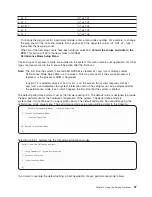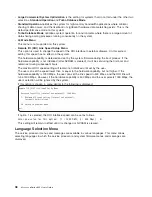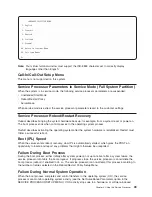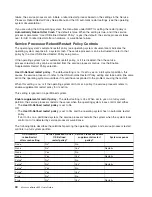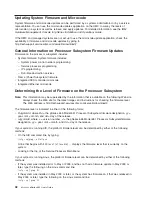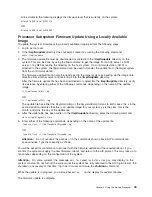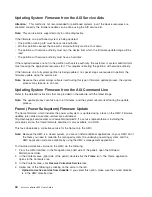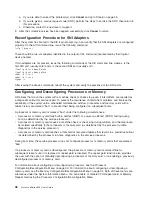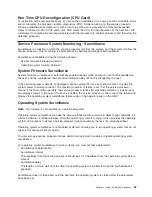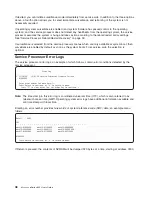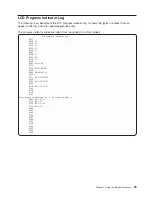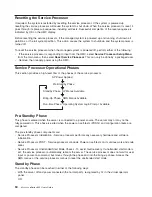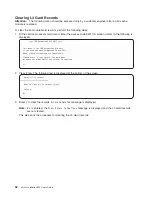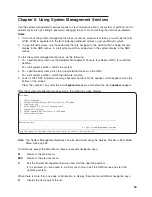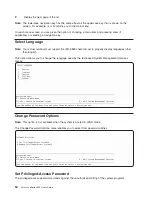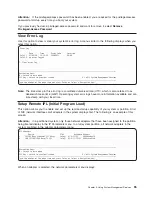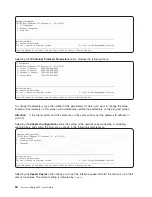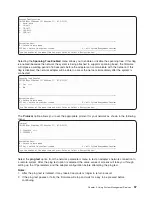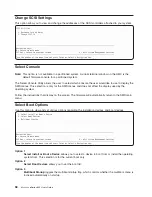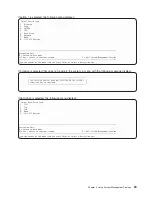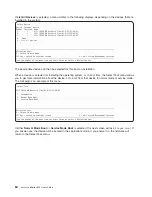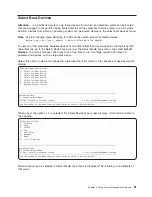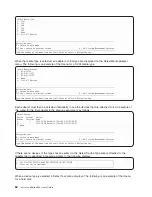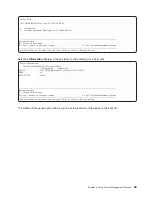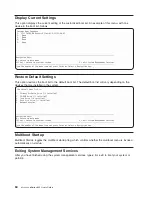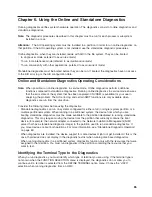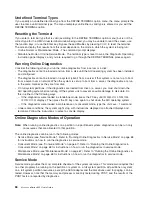
v
With
the
server
on
after
an
operating
system
fault,
recognized
by
an
8-digit
code
in
the
virtual
operator
panel.
In
the
standby
phase,
the
service
processor
takes
care
of
some
automatic
duties
and
is
available
for
menus
operation.
The
service
processor
remains
in
the
standby
phase
until
a
power-on
request
is
detected.
The
standby
phase
components
are
as
follows:
v
Menus
The
service
processor
menus
are
password-protected.
Before
you
can
access
them,
you
need
either
the
general
user-password
or
privileged-user
password.
On
HMC-managed
systems,
service
processor
menus
are
available
on
the
HMC
graphical
user
interface.
Bring-Up
Phase
The
bring-up
phase
components
are
as
follows:
v
Retry
Request
Check
The
service
processor
checks
to
see
if
the
previous
boot
attempt
failed.
If
the
specified
number
of
failures
are
detected,
the
service
processor
displays
an
error
code.
v
Dial
Out
This
function
is
handled
by
the
Service
Agent
code
running
on
the
HMC.
The
service
processor
issues
an
error
report
with
the
last
reported
IPL
status
indicated
and
any
other
available
error
information.
v
Update
Operator
Panel
(on
the
HMC)
The
service
processor
displays
operator
panel
data
on
the
HMC
virtual
terminal
window
if
a
remote
connection
is
active.
v
Environmental
Monitoring
The
service
processor
provides
expanded
error
recording
and
reporting.
v
System
Firmware
Surveillance
(Heartbeat
Monitoring)
The
service
processor
monitors
and
times
the
interval
between
system
firmware
heartbeats.
v
Responding
to
System
Processor
Commands
The
service
processor
responds
to
any
command
issued
by
the
system
processor.
Runtime
Phase
This
phase
includes
the
tasks
that
the
service
processor
performs
during
steady-state
execution
of
the
operating
system.
v
Environmental
Monitoring
The
service
processor
monitors
voltages,
temperatures,
and
fan
speeds
(on
some
servers).
v
Responding
to
System
Processor
Commands
The
service
processor
responds
to
any
command
issued
by
the
system
processor.
v
Run-Time
Surveillance
If
the
device
driver
is
installed
and
surveillance
enabled,
the
service
processor
monitors
the
system
heartbeat.
If
the
heartbeat
times
out,
the
service
processor
places
an
outgoing
call.
This
is
different
from
the
bring-up
phase
scenario,
where
the
specified
number
of
reboot
attempts
are
made
before
placing
an
outgoing
call.
v
HMC
surveillance
On
an
HMC-managed
system,
the
service
processor
monitors
the
communication
link
between
the
managed
system
and
the
HMC.
If
the
service
processor
detects
that
this
communication
link
has
been
broken,
it
will
post
an
error
to
the
operating
system
running
on
the
managed
system.
Chapter
4.
Using
the
Service
Processor
51
Summary of Contents for p 655 series
Page 1: ...pSeries 655 User s Guide SA38 0617 03 ERserver...
Page 2: ......
Page 3: ...pSeries 655 User s Guide SA38 0617 03 ERserver...
Page 10: ...viii Eserver pSeries 655 User s Guide...
Page 14: ...xii Eserver pSeries 655 User s Guide...
Page 16: ...xiv Eserver pSeries 655 User s Guide...
Page 24: ...6 Eserver pSeries 655 User s Guide...
Page 32: ...14 Eserver pSeries 655 User s Guide...
Page 36: ...18 Eserver pSeries 655 User s Guide...
Page 90: ...72 Eserver pSeries 655 User s Guide...
Page 144: ...126 Eserver pSeries 655 User s Guide...
Page 208: ...190 Eserver pSeries 655 User s Guide...
Page 214: ...196 Eserver pSeries 655 User s Guide...
Page 217: ......

